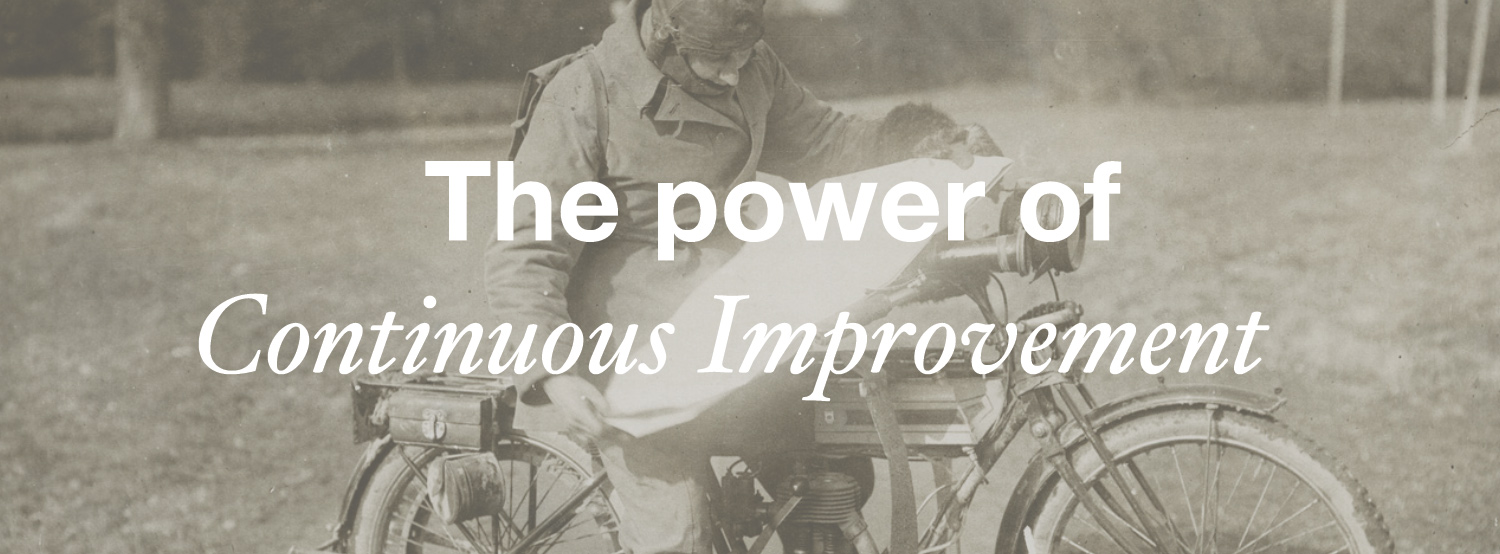
Valentino Rossi And The Power Of Continuous Improvement
If you seek growth – and if you realise the connection between digital and that growth – then it is necessary to adopt a mindset of continuous improvement to sustain a high-performing website.
In our previous blog, we outlined Why Website Maintenance Matters.
However, maintenance is simply about holding your current position and for many organisations, that’s not good enough.
A better approach is continuous improvement. If you seek growth – and if you realise the connection between digital and that growth – then it is necessary to adopt a mindset of continuous improvement to sustain a high-performing website.
The Harvard Business Review published a study in 2019 that showed continuous improvement practices often fall away because people become too busy with other tasks. We see this all the time with digital marketing.
A client gets time and the digital marketing powers forward for a while. Then they get busy and it lies dormant for far too long.
“These things always work well initially, but often the gains fade very quickly,” The University of Oxford’s Matthias Holweg is quoted as saying.
Some refer to it as “initiative fatigue”.
The way to combat this fatigue is to take it from being an “initiative” and making it part of the bedrock of your organisation.
Some clients use a technique akin to the Vikings that burned their ships after landing on English soil. They either won or they died; there was no retreat. In today’s business world, some organisations pre-commit a set budget to the continuous improvement of their digital presence.
Some set aside a certain amount to be applied to a year’s plan of projects, while others break it down to three-monthly sprints. A portion of the budget is also set aside to be able to strike quickly on new initiatives.
These funds are ringfenced. It’s agreed that they shouldn’t be used for support tasks because that’s an investment in “fixing”, rather than an investment in “improving”.
Another “trick” is to set up continuous improvement meetings at the start of each year. One of our clients of 28 years is the Australian Hotels Association. We meet at least six times a year, work to an agenda – and their digital presence is always on the list.
With another client, we run experiments on their website and report back every three months. By taking small risks (eg. through A/B testing) and gathering data, great gains can be made.
Another way that continuous improvement funds can be used to achieve outsized gains is through training. With the natural turnover of staff, we sometimes find that we hold more knowledge about a website or an app or a social media strategy than our clients do. Some websites are so powerful and fully featured that new staff struggle to understand the power they already have.
During a routine meeting with a marketing manager who had been with large company for more than 20 years, he said: “I’d forgotten we could do that.” We then jumped into the backend of the website and ran through the functionality with him and a colleague. So if a 20-year employee forgets things, then new staff will really struggle.
By allocating a certain amount of your continuous improvement budget to training, you ensure that your team can make the most of your digital investment.
Or the training could be used to take a staff member from being technically competent to being technically excellent.
Just yesterday, a potential new client in the personal services arena said they understood Google Advertising (formerly AdWords) and they used it – but they had it on “set and forget”, even though they realised this was costing them money. In this case, a continuous improvement budget could fund someone to spend an hour to two each month to analyse the data and make suggestions for improvement.
To sum up, a word from Valentino Rossi, multiple MotoGP World Champion:
“In 2002 the Yamaha was at more or less the same level as the Honda, better in some ways, worse in others. But in the winter of last year between 2002 and 2003, Honda made a big step forward and it seemed as if Yamaha couldn't quite match that improvement.
Imagine being able to say that in a year from now. Imagine being able to say that after a year of continuous improvement and incremental change, you are now well ahead of your competitors.
If that sounds like you, we would be happy to meet and see if our thinking aligns with yours.
Contact us today.



